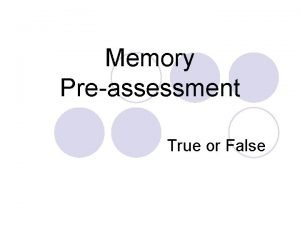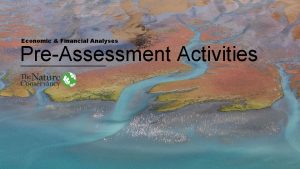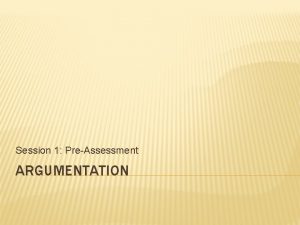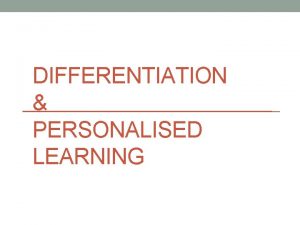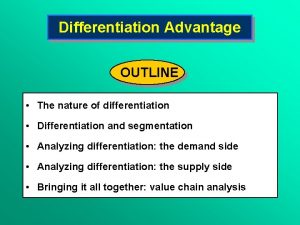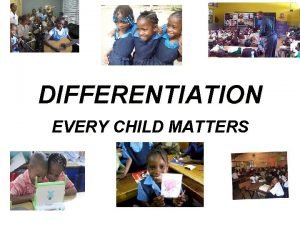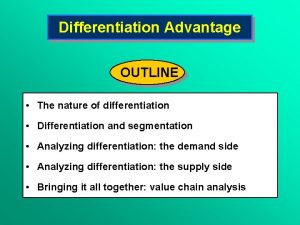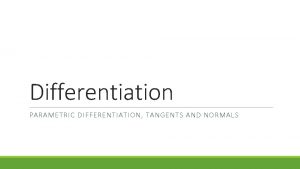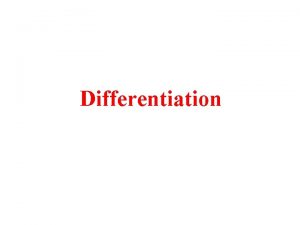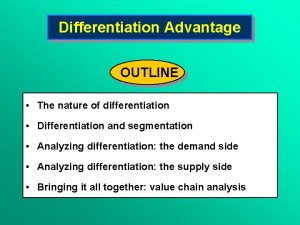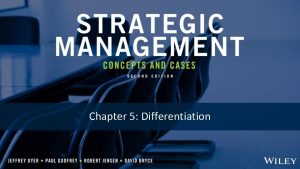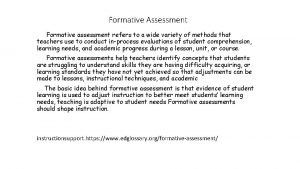DIFFERENTIATION IN THE 21 ST CENTURY PreAssessment Formative





















- Slides: 21

DIFFERENTIATION IN THE 21 ST CENTURY Pre-Assessment, Formative Assessment and Instructional Differentiation CEC Conference Nov. 19, 2017 Presented by: Tammy Redecker and Jamie Miller

NORMS • Be present and fully engaged • Value the spirit of collaboration • Be willing to question and be questioned • Be willing to be disturbed • Respect multiple perspectives and avoid assumptions • Be professional in all that we do • Be focused on the vision we have for students

FOUR CORNERS: PREASSESSMENT Based on the given question, move to the corner that best represents where you are. How would you rate your use of differentiation in the classroom? How would you describe your use of preassessment in the classroom to determine lesson starting points? How effective are you at utilizing ongoing formative assessments to differentiate instruction?

OUTCOMES • Calibrate our understanding around what differentiation is. • Understand the role of assessment in the differentiated classroom. • Learn instructional ideas for differentiating your classroom.

• Differentiation Calibration • Assessment • Assumption Wall • Most Important • Leveled Readings • Differentiating • Content • Process • Product • Reflection AGENDA

WHAT IS DIFFERENTIATION?

DIFFERENTIATION: • Focuses on whom we teach, where we teach, and how we teach • Its primary goal is to ensure the learning of every student • Responsive teaching, meaning that teachers are attuned to students' varied learning needs and will make modifications in how students get access to important ideas and skills, in ways they will demonstrate understanding of essential ideas and skills, and the learning environment • Suggests that teachers can work to implement patterns of instruction to benefit multiple students versus individualization (Tomlinson and Mc. Tighe, 2006)

The most important single factor influencing learning is what the student already knows. Ascertain this and teach him accordingly. --David Ausubel, Educational Psychology: A Cognitive View

ASSESSMENT ASSUMPTION WALL • As an individual: • Write 1 assumptions you have about assessment on a strip of paper. • As a group: • Once everyone has written down their 1 assumption, put them in the middle of your group. • In "Round Robin" fashion, go around the table having each person identify one assumption that they would like to have clarified or the rationale behind. • The person who wrote the assumption is the only person allowed to speak and give their rationale. • Turn over the assumption once it has been discussed

MOST IMPORTANT!: Working individually: • Read your assigned section of text • Identify your most important • Word • Sentence • Paragraph Working as a group: • Compare your words, sentences and paragraphs • Determine 1 word, 1 sentence, and 1 paragraph that best represents your section of text • Capture your word, sentence and paragraph in writing and be prepared to give a rationale for your decision

ASSESSMENT ASSUMPTION WALL Revisit your assumptions • In what ways might your thinking have been changed or clarified? • In what ways might your thinking have been confirmed? Discuss as a table group


WAYS TO DIFFERENTIATE: Content • What is to be learned or mastered • What we want the student to accomplish after instruction • Includes curriculum topics, concepts or themes • Reflects state or national standards

WAYS TO DIFFERENTIATE: Process • How students learn or interact with the content • How students make sense of or understand the information, ideas, and skills being studied • Reflects student learning styles and preferences • Varies the learning process depending upon how students learn

WAYS TO DIFFERENTIATE: Product • The end result of student learning • How students demonstrate mastery or understanding of material • Tends to be tangible or observable: reports, tests, presentations, displays. . . • Can allow for choice, variety, and challenge

WAYS TO DIFFERENTIATE: Learning Environment • "Weather" or mood of the classroom • Includes classroom's operation and tone • • • Class rules Furniture arrangement Lighting Procedures Community

WAYS TO DIFFERENTIATE: What? , So what? , Now what? Strategy • Individually • Choose 2 -3 different teaching techniques • Return to your seat • Complete your graphic organizer • Share your learning with a peer

FOUR CORNERS: REFLECTION Based on your new learning, clarification or time to review information, move to the corner that best represents where you are. How would you describe your level of understanding and comfort with differentiation as it relates to content, process and product based on the use of assessments?

REFERENCES: Bender, W. N. (2002). Differentiating instruction for students with learning disabilities: Best teaching practices for general and special educators. Thousand Oaks, California. Corwin Press, Inc. Gregory, G. H. , & Chapman, C. (2002). Differentiated instructional strategies: One size does not fit all. Thousand Oaks, California. Corwin Press, Inc. Tomlinson, C. A. , & Mc. Tighe, J. (2006). Integrating differentiated instruction + understanding by design: Connecting content and kids. Alexandria, Virginia. Association for Supervision and Curriculum Development. Tomlinson, C. A. , & Moon, T. R. (2013). Assessment and student success in a differentiated classroom. Alexandria, Virginia. Association for Supervision and Curriculum Development.

FEEDBACK https: //goo. gl/r 46 yp. C

THANK YOU!
 độ dài liên kết
độ dài liên kết Thiếu nhi thế giới liên hoan
Thiếu nhi thế giới liên hoan Các môn thể thao bắt đầu bằng tiếng bóng
Các môn thể thao bắt đầu bằng tiếng bóng Fecboak
Fecboak Hình ảnh bộ gõ cơ thể búng tay
Hình ảnh bộ gõ cơ thể búng tay Một số thể thơ truyền thống
Một số thể thơ truyền thống Trời xanh đây là của chúng ta thể thơ
Trời xanh đây là của chúng ta thể thơ Hệ hô hấp
Hệ hô hấp Gấu đi như thế nào
Gấu đi như thế nào Tư thế ngồi viết
Tư thế ngồi viết Số nguyên tố là số gì
Số nguyên tố là số gì đặc điểm cơ thể của người tối cổ
đặc điểm cơ thể của người tối cổ Các châu lục và đại dương trên thế giới
Các châu lục và đại dương trên thế giới ưu thế lai là gì
ưu thế lai là gì Thế nào là hệ số cao nhất
Thế nào là hệ số cao nhất Thẻ vin
Thẻ vin Slidetodoc
Slidetodoc Bàn tay mà dây bẩn
Bàn tay mà dây bẩn Từ ngữ thể hiện lòng nhân hậu
Từ ngữ thể hiện lòng nhân hậu Cách giải mật thư tọa độ
Cách giải mật thư tọa độ Tư thế ngồi viết
Tư thế ngồi viết Chụp tư thế worms-breton
Chụp tư thế worms-breton
























